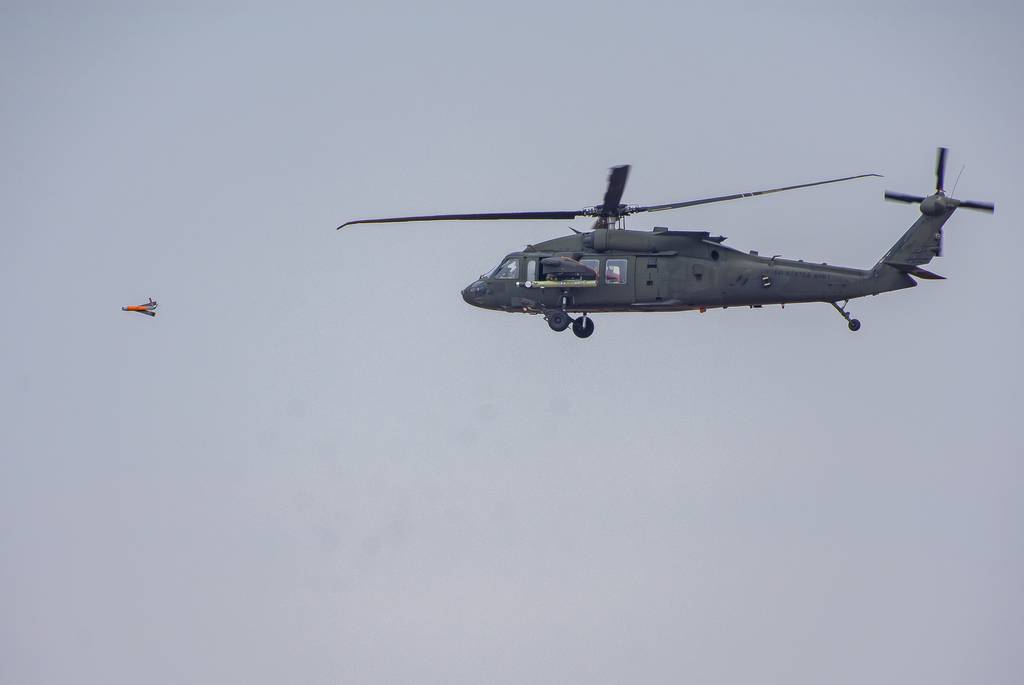
The U.S. Army has spent roughly five years assessing what a helicopter-fired, long-range precision munition would look like. But during that time other options have emerged that could achieve greater commonality with weapons that can be launched from a greater number of platforms, according to the service’s lead for force development.
“Frankly, I have a lot of questions in this space, as the G-8, that I’ve asked for,” Lt. Gen. Karl Gingrich told Defense News in a recent interview.
The Army has procured an interim system for its Long-Range Precision Munition program, or LRPM — Israeli company Rafael Advanced Defense Systems’ Spike non-line-of-site missile. The service is fielding it on a portion of its AH-64 Apache attack helicopters.
The service was expected to choose an industry team to provide a new LRPM in fiscal 2023 following a shoot-off that included the Spike weapon in the fall of 2022, but that decision was delayed.
The Spike “has inherent qualities to it: range, great; sensor, maybe not what we need in the long term,” Gingrich said.
“Is that the solution to proliferate across all Apaches? I’m not sold yet. I need to do some more work,” he added. “LRPM actually is looking an awful lot like a Launched Effects-Medium Range.” Launched effects are expected to deliver capabilities such as targeting, reconnaissance, surveillance, network extension and lethality in a complex environment.
Gingrich said he is considering commonality as a factor. There is a possibility, he noted, that LPRM “just gets pushed into Launched Effects-Medium Range and then now, potentially, we could have a common capability at that range in that form factor that could be air-delivered or ground-delivered from a platform.”
One attribute under consideration, according to Gingrich, is the missile’s speed. A loitering munition is slower. “Do you still need that direct attack that comes in at a higher rate of speed?” he asked. “I don’t know.”
Indeed, the Army still needs something that can achieve extended ranges when considering current battlefields, Gingrich said. “We still have Hellfire [missiles]. We still have [the Joint Air-to-Ground Missile] JAGM, but we’ve never been able to really get the range that we need out of JAGM, which is a great system,” he noted.
The Army is prioritizing the development and acquisition of launched effects that are capable of flying at different ranges and deploying from a variety of air and ground vehicles, particularly with the cancellation of the service’ crewed Future Attack Reconnaissance Aircraft, which made available funding to pursue those programs.
Gingrich is preparing for a session with the Army Requirements Oversight Council to solidify requirements for launched effects. That meeting is scheduled for June 28.
A year ago, the strategy for launched effects was murky. The Army was considering several size classes for launched effects and was prototyping the first version of a small capability. This version was meant to help the service decide how to procure and employ these systems on the battlefield.
There is a great deal of interest from industry. The service held an event in February for launched effects with a large turnout from businesses. The service also plans to experiment with a heavy focus on launched effects at its aviation experimentation event, known as Edge, this fall.
The medium-range launched effects prototype is the result of contributions from five companies that teamed up. The Army plans to wrap up evaluation of the prototypes in September and will then weigh a number of options, from rapid fielding to low-rate initial production to more prototyping.
The service also released a request for proposals in March for a short-range launched effect. A prototyping process for that effort will begin in early FY25.
A long-range version is considered more of a corps-level asset, and prototyping will begin to develop the capability at the tail end of FY25.
Jen Judson is an award-winning journalist covering land warfare for Defense News. She has also worked for Politico and Inside Defense. She holds a Master of Science degree in journalism from Boston University and a Bachelor of Arts degree from Kenyon College.
- SEO Powered Content & PR Distribution. Get Amplified Today.
- PlatoData.Network Vertical Generative Ai. Empower Yourself. Access Here.
- PlatoAiStream. Web3 Intelligence. Knowledge Amplified. Access Here.
- PlatoESG. Carbon, CleanTech, Energy, Environment, Solar, Waste Management. Access Here.
- PlatoHealth. Biotech and Clinical Trials Intelligence. Access Here.
- Source: https://www.defensenews.com/industry/techwatch/2024/06/07/us-army-debates-path-to-buy-long-range-precision-munitions/



